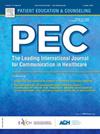Pictorial art for gaining informed consent in low-literacy settings
IF 2.9
2区 医学
Q2 PUBLIC, ENVIRONMENTAL & OCCUPATIONAL HEALTH
引用次数: 0
Abstract
Objective
Gaining informed consent for research in low-literacy setting is challenging. This study explores the creation and use of pictorial art in information and consent form in Sierra Leone (SL).
Methods
A pictorial ‘information and consent’ (PIC) sheet was developed with an illustrator (co-author) and local colleagues for a national oral health survey involving school children in SL. Evaluation included 500 participants (children and parents) who received a feedback form to assess their satisfaction with pictures and also their effectiveness in aiding understanding of the research process, using a visual five-point Likert scale. Data were descriptively analysed using STATA v.18.
Results
Feedback was received from 360 children (aged 12 and 15 years) and 14 parents of 6-year-olds. The average rating, out of five, for the question about liking pictures on the PIC sheet was 4.83 (S.D. = 0.62), while rating for how well pictures helped them understand the survey was 4.87 (S.D. = 0.54). Although most feedback was positive, a small minority expressed negative views.
Conclusion
Overall, participants appreciated that the pictorial aids had helped in understanding the research process.
Practical implications
Pictorial aids show potential to improve comprehension and informed consent in low-literacy settings, indicating a promising approach for future research in similar contexts.
在低文化背景下获得知情同意的绘画艺术
在低识字率环境下获得研究的知情同意具有挑战性。本研究探讨了塞拉利昂(SL)在信息和同意书中绘画艺术的创作和使用。方法与一位插画师(合着者)和当地同事一起制作了一份图片“信息和同意”(PIC)表,用于SL学童的全国口腔健康调查。评估包括500名参与者(儿童和家长),他们收到了一份反馈表格,以评估他们对图片的满意度以及他们对帮助理解研究过程的有效性,使用视觉五点李克特量表。使用STATA v.18对数据进行描述性分析。结果共收到360名12、15岁儿童和14名6岁儿童家长的反馈。对于喜欢PIC表格上的图片的问题,平均评分为4.83(标准差= 0.62),而对于图片在多大程度上帮助他们理解调查的评分为4.87(标准差= 0.54)。虽然大多数反馈是正面的,但也有一小部分人表达了负面意见。结论总的来说,与会者对图片辅助工具有助于了解研究过程表示赞赏。实际意义:在低识字率的环境中,视觉辅助显示出提高理解能力和知情同意的潜力,这为未来在类似背景下的研究指明了一种有希望的方法。
本文章由计算机程序翻译,如有差异,请以英文原文为准。
求助全文
约1分钟内获得全文
求助全文
来源期刊

Patient Education and Counseling
医学-公共卫生、环境卫生与职业卫生
CiteScore
5.60
自引率
11.40%
发文量
384
审稿时长
46 days
期刊介绍:
Patient Education and Counseling is an interdisciplinary, international journal for patient education and health promotion researchers, managers and clinicians. The journal seeks to explore and elucidate the educational, counseling and communication models in health care. Its aim is to provide a forum for fundamental as well as applied research, and to promote the study of organizational issues involved with the delivery of patient education, counseling, health promotion services and training models in improving communication between providers and patients.
 求助内容:
求助内容: 应助结果提醒方式:
应助结果提醒方式:


